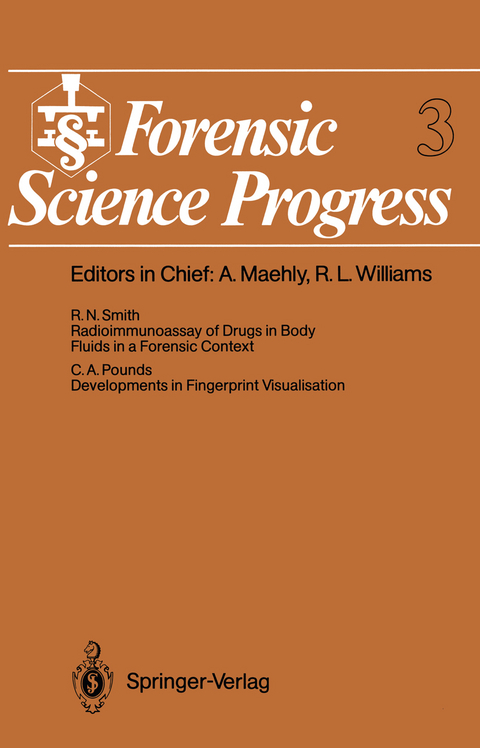
Forensic Science Progress
Volume 3
Seiten
2011
|
1. Softcover reprint of the original 1st ed. 1988
Springer Berlin (Verlag)
978-3-642-73060-3 (ISBN)
Springer Berlin (Verlag)
978-3-642-73060-3 (ISBN)
Competitive binding techniques such as radioimmunoassay (RIA) are widely used to measure an enormous variety of compounds in biological fluids. Current methods have 1 2 arisen from the pioneering work ofYalow and Berson in the U. S. A. and Ekins in the u. K. Much of the early development was concerned with the analysis of protein hormones, and nearly a decade passed before attention focussed also on small molecules such as steroids and drugs. The potential of immunoassay methods for drug monitoring in clinical and forensic laboratories and in addict treatment programmes resulted in the commercial production of immunoassays for various therapeutic and abused drugs, making the technique available to laboratories lacking the facilities to raise their own antisera and synthesise labelled compounds. However, commercial assays are not only expensive but are restricted in range, and so it is advantageous for a forensic laboratory to have the capability to devise "in-house" immunoassays suited to its particular requirements. This chapter describes the theory and practice of RIA in forensic drug analysis. Much of the theory and some of the practice are applicable to immunoassays in which non isotopic labels are used, but such assays are not described in detail since, to date, the versatility and sensitivity of RIA have made it the immunoassay technique of choice in forensic toxicology. The particular advantages of RIA are its sensitivity and the fact that samples such as haemolysed blood can be assayed with little or no prior preparation.
Contents/Information: 'Radioimmunoassay of Drugs in Body Fluids in a Forensic Context' by R.N. Smith: The theory and practice of radioimmunoassay are described with particular reference to the analysis of drugs in body fluids in a forensic context. Radioimmunoassay theory is outlined from basic principles and the practical design of a drug assay is considered in detail. 'Developments in Fingerprint Visualisation' by C.A. Pounds: Methods are reviewed to visualize fingerprints left at a scene of crime or on feloniously handled material for comparison of fingerprints as a way to identify an individual.
| Erscheint lt. Verlag | 6.12.2011 |
|---|---|
| Reihe/Serie | Forensic Science Progress |
| Co-Autor | C.A. Pounds, R.N. Smith |
| Zusatzinfo | IX, 125 p. |
| Verlagsort | Berlin |
| Sprache | englisch |
| Maße | 155 x 235 mm |
| Gewicht | 224 g |
| Themenwelt | Naturwissenschaften ► Chemie ► Analytische Chemie |
| Schlagworte | Protein • synthesis • Toxicology |
| ISBN-10 | 3-642-73060-4 / 3642730604 |
| ISBN-13 | 978-3-642-73060-3 / 9783642730603 |
| Zustand | Neuware |
| Haben Sie eine Frage zum Produkt? |
Mehr entdecken
aus dem Bereich
aus dem Bereich


